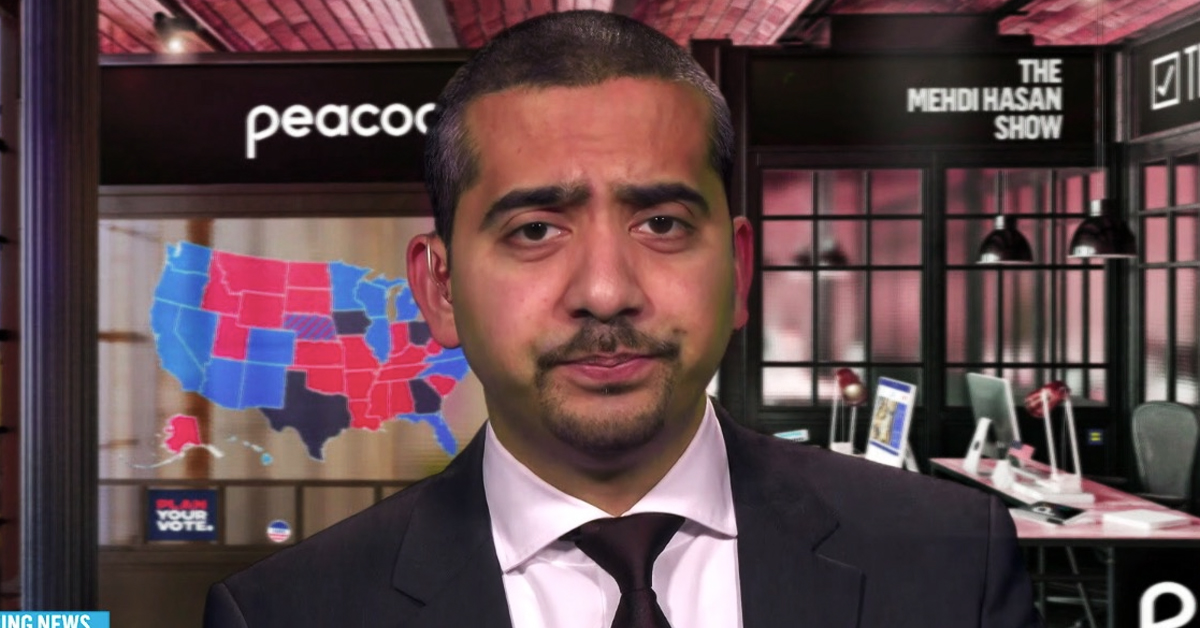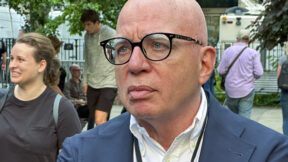Columbia Journalism Review Actually Asserted, As a Fact, That Progressives Are ‘Underrepresented in Media’

“Journalists should have a bias,” said MSNBC’s Mehdi Hasan during his show’s MSNBC debut, a fact pointed out by Columbia Journalism Review’s Jon Allsop in an interview and profile on the journo published at CJR last week.
It’s a sentiment shared and voiced by a fair amount of journalists these days, usually with a qualifier or twist to make the reader or listener go “ahh, oh I see what you did there.”
In Hasan’s case, his addendum was “a bias toward democracy.” Others might claim “a bias toward truth” or similar platitudes. The qualifier isn’t the hook, though, it’s the declaration. The “explicit rebuke to outdated journalistic norms” as Allsop described Hasan’s approach.
It’s a fitting thematic element in an article that itself embraces bias, except when opposing it. From the disdain of “both sides” reporting, to the complaints about who gets a voice on air (both common topics in the very- and far-left parts of politics), the profile is from an ally vantage. Then an absurd one.
“Genuinely tough interviewers are rare on American TV, as are strong progressive voices; Hasan is both,” writes CJR.
The first part of that statement is arguably true. The second part is laughably not.
And then: “As in the US, voices of the left have traditionally been underrepresented in the British media,” Allsop stated as a matter of obvious fact.
It’s not just the leftward tilters who complain about being unheard on air. The right makes the same claim. You might say “both sides” are given to this persecution theme.
In this case, CJR quotes journalism professor Jay Rosen on the subject of Hasan’s space in media, saying “Nobody’s gonna accuse him of being a ‘he said, she said,’ phony-neutral journalist. But I think he very smartly includes being critical of liberal politicians—from the left—as part of his mission.”
“Phony-neutral” is another big tell that you’re hearing a decidedly progressive perspective.
But Hasan has been “scathing” about Joe Manchin and Kyrsten Sinema, and he “eviscerated” Barack Obama’s memoir for “papering-over his use of drones,” the reader is told, as evidence of criticizing “both sides.”
“In an era that has exposed the failings of triangulation and false equivalence, Hasan has shown that you can scrutinize ‘both sides’ from a place of unabashed moral clarity,” CJR writes of Hasan. Hasan who, on the subject of the voluntary resignation of the never-impeached Andrew Cuomo, recently claimed that “there is only accountability for Democrats in our system. Not for Republicans.”
Taken as unargued the biased implications of the words “triangulation” and “false equivalence,” it’s certainly hypothetically plausible that a person can scrutinize both sides with moral clarity. Surely any person guided by their own morals would find it difficult to do otherwise. Except criticism of bias isn’t predicated on the idea that the biased don’t live up to their own standards, but rather the standards of the profession, and its ethical and moral clarity.
That clarity was long central to the prominence of Columbia Journalism Review; those standards its purview and pursuit.
Contra Professor Rosen, I consulted an anonymous, biased expert of my own on this:
CJR was once the highbrow internal newsletter of the journalism industry, a measuring stick of what was on the minds of publishers, editors, reporters, and everyone who took journalism very very seriously. It humbly declared itself, ‘the voice of journalism.’ Much the way a pod person in an alien invasion movie resembles the old self but acts completely differently, the current CJR cruises on its past reputation while fuming that America’s racial divisions aren’t covered enough by the news media, arguing that the current coverage of climate change is too evenhanded, insisting Teen Vogue is worth taking seriously, and seething about ‘The Wall Street Journal’s stubborn conservatism.’ It is everything you can get from following a bunch of angry self-absorbed progressives on Twitter, for a subscription price of $50 per year.
In the context of journalism today, you could read this profile and find it perfectly in place and of a piece with everything you see from publishers, editors, reporters, and etc. But as my anonymous friend reminds us, that’s not what CJR was understood to be. Not of a piece with it but apart from it, looking over journalism’s shoulder and saying “ooh, cut that line.”
This near-fawning treatise on the plight of the lonely progressive is so far out-of-step with the still somewhat popular idea — in middle America at least — of an objective media that it almost seems intentionally dissonant. Almost.
The degree to which the argument — that progressives are disfavored against centrist Democrats or the Right – and assessment run counter to every American’s experience with and perception of media cannot be understated. It only seems baseline to those who are already well on the progressive side of the divide.
Still, many prominent progressive voices in media make the same claim often. You’d think the fact that there are so many to claim it, in so many ways, on so many platforms, to so wide an audience would take some of the breath from it. But nope.
Progressive voices are prominent in media, of course, and at Columbia Journalism Review, too, one might add. They are popular voices. At outlets like MSNBC and CNN, farther left hosts like Tiffany Cross or Jim Acosta nab the lion’s share of buzz and attention. Progressive guests and contributors are as commonplace on those networks as conservatives increasingly aren’t.
News organizations like NBC offer entire websites like Think that are dedicated to progressive ideas and causes. The progressive agenda on everything from climate to choice to race are taken as a given nearly universally among on-air personalities. If, as Hasan and Allsop assert, the only good battle for air time is between the somewhat and the very liberal, then “very” is wining by a country mile.
There have been a number of remarkable moments Mehdi Hasan’s impressive career, which are outlined in this engaging narrative by Jon Allsop, himself a savvy, talented writer. As a profile of an advocate, by an advocate, a fascinating read. But it is not just a profile.
Journalists should have a bias, the article admonishes and entreats. On that point it measures up with unabashed clarity. Where the narrative acts as media critic, however, it unintentionally becomes an object lesson in how embracing bias can rob a person, or a publication, or even an estate of the realm, entirely of perspective.
This is an opinion piece. The views expressed in this article are those of just the author.




